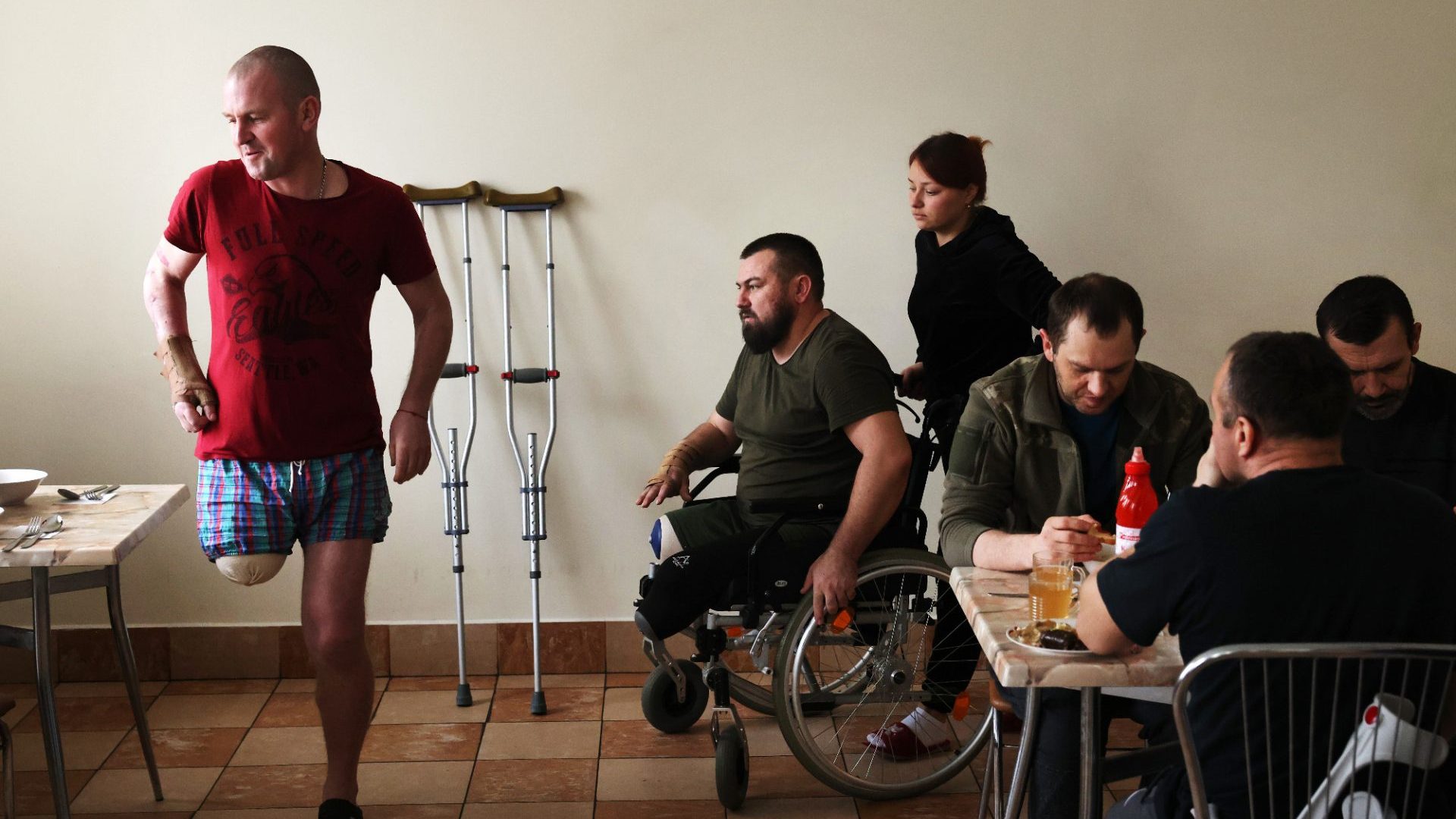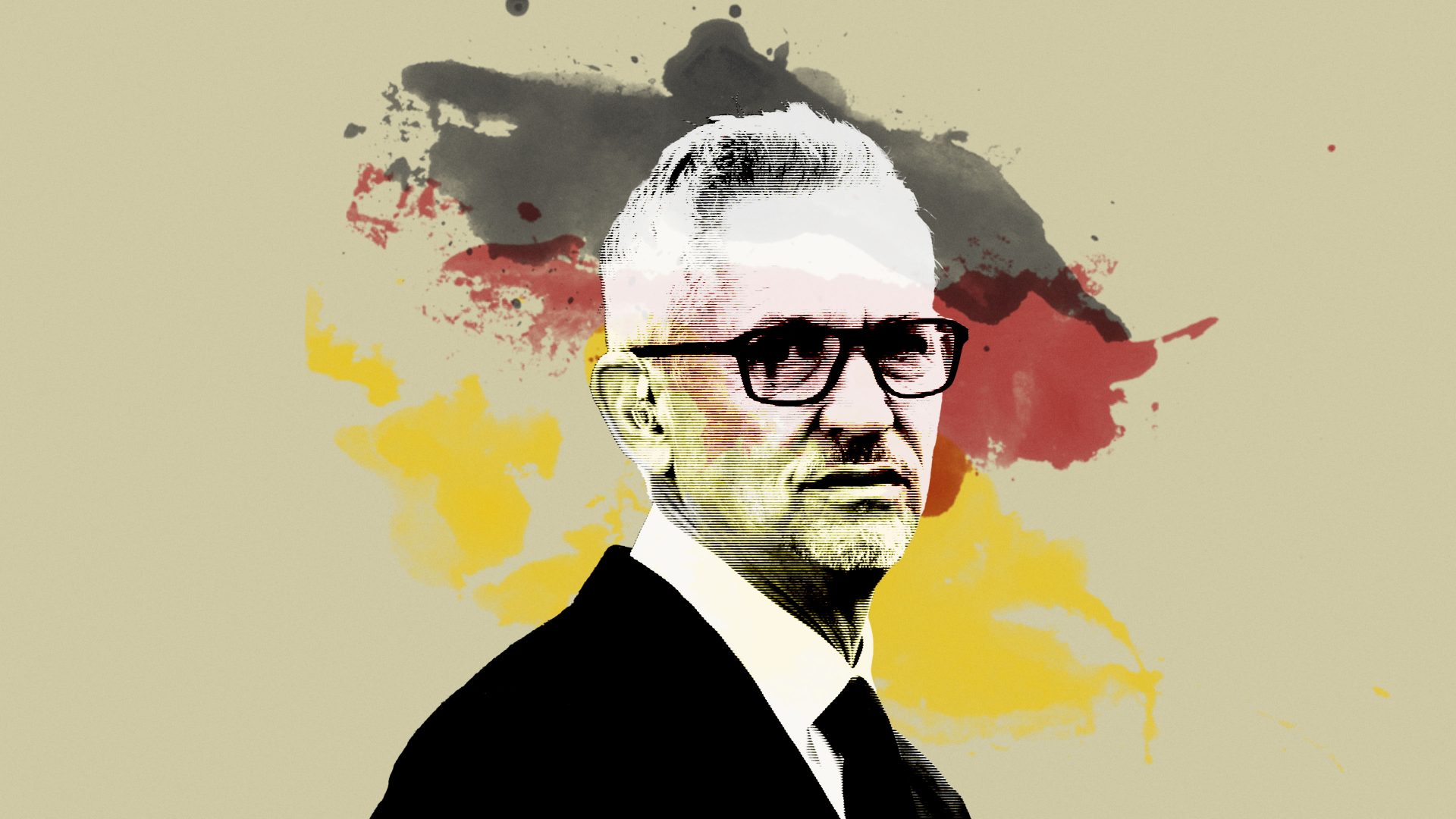The first thing you notice when you finally find your cabin on the overnight sleeper train from Lviv to Kyiv is the window, which has been wrapped in transparent film in case the compartment is the target of stray artillery; that way the plastic will stop the shattered glass blinding anyone and lacerating their skin. This has the desired effect of reassuring you while at the same time frightening the living daylights out of you.
The second thing you notice is the fact that the train is almost completely empty: nowadays nobody particularly wants to visit a war zone.
When you get to Kyiv nine hours later, just as dawn is breaking (think yourself lucky; the cabins without beds are on what the army refers to as “the pain train”), you find a city that refuses to acknowledge a war nobody wanted in the first place. People go about their business as though nothing has really happened, while the general lack of security is initially alarming. I’ve seen more security measures outside a five-star Istanbul hotel than I did in Kyiv, as the citywide attitude is very much, “F*** you, comrade Putin.”
When I first went to Russia in the 1980s, there was an image of Lenin on every available flat surface. Here in Ukraine right now, Volodymyr Zelensky occupies similar spaces, although in his case the images have been put up voluntarily.
If they don’t carry a photo of Zelensky, everyone carries the Ukrainian flag somewhere on their body, either as a flag patch attached to the sleeve of their jacket like a huge plaster, or positioned randomly on their body, the blue sky and yellow sunflowers acting as an abstract display of pride, rebellion and spite.
“The Russians came for us, but they couldn’t catch us,” said an off-duty soldier outside my hotel. “They found a few of us, but believe me, their brutality will not be forgotten, and will be repaid twice over.”
For Ukrainians, retribution is now officially a birthright. Increasingly there is an air of defiance in the city, although the conversation will also focus on a longer-term prospect: reconstruction.
When Putin’s thugs have finally been banished – and the consensus seems to be that this will take at least another year, perhaps longer, one way or another – Ukraine will become the biggest emerging market in the world.
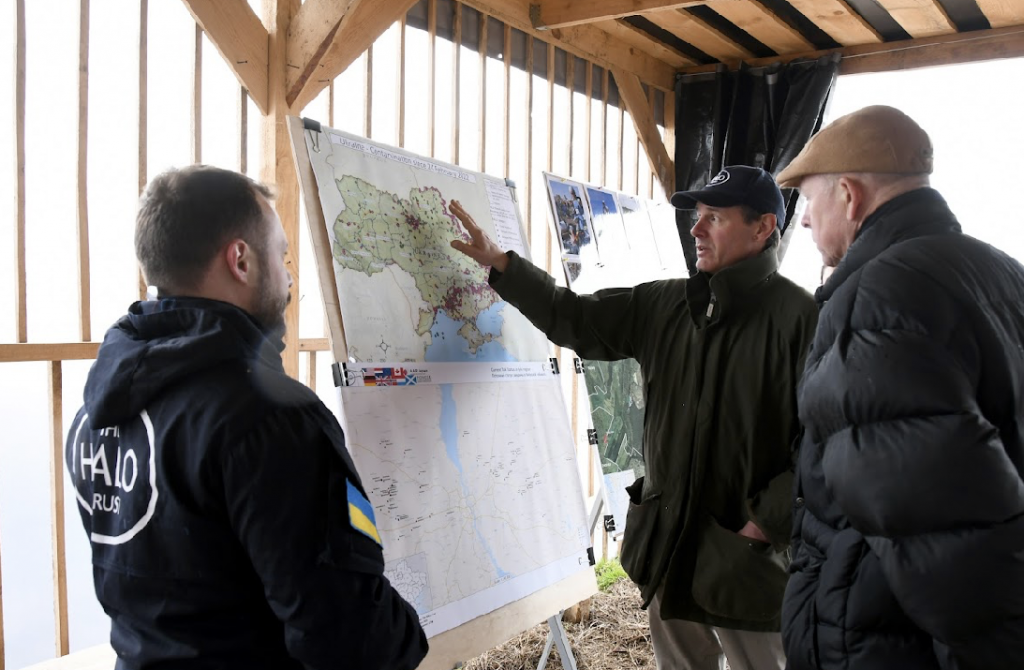
Before that, of course, there is still a humanitarian crisis to deal with, which is why the Halo Trust has become so important. For over 30 years, this global organisation has been saving lives and helping wartorn communities recover, by making their land safe. When conflict ends, land is all too often littered with landmines and other dangerous explosives, and true peace doesn’t come until the land is safe.
So Halo Trust helps by removing landmines, unexploded bombs and still-live artillery ammunition. The trust is fully operational here in Kyiv, as well as around Brovary, which is home to its HQ. It currently has 700 operatives working out in the fields – almost all of whom are Ukrainians – and this will have grown to 1,200 by the end of the year.
While I was in the city, I visited half a dozen international ambassadors, including those from the UK and the US, Norway and Germany, and each and every one of them stressed the importance of preparing the country for genuine reconstruction.
“When this is all over, Ukrainians will begin to soar,” said one. “But before that happens, we need charities like you to make the country safe.”
Here, 25% of military casualties are the result of mines (usually laid by the Russians as they are retreating), which are now scattered over the country like poisoned confetti.
“You have no idea of the scale of contamination,” says Halo Trust’s chief executive, James Cowan. “The landmine damage to Ukraine is going to be much worse than it was in either Iraq or Afghanistan. Here, one day’s fighting roughly equates to one month’s intense clearing. When you know that, you can begin to understand the magnitude of the problem.”
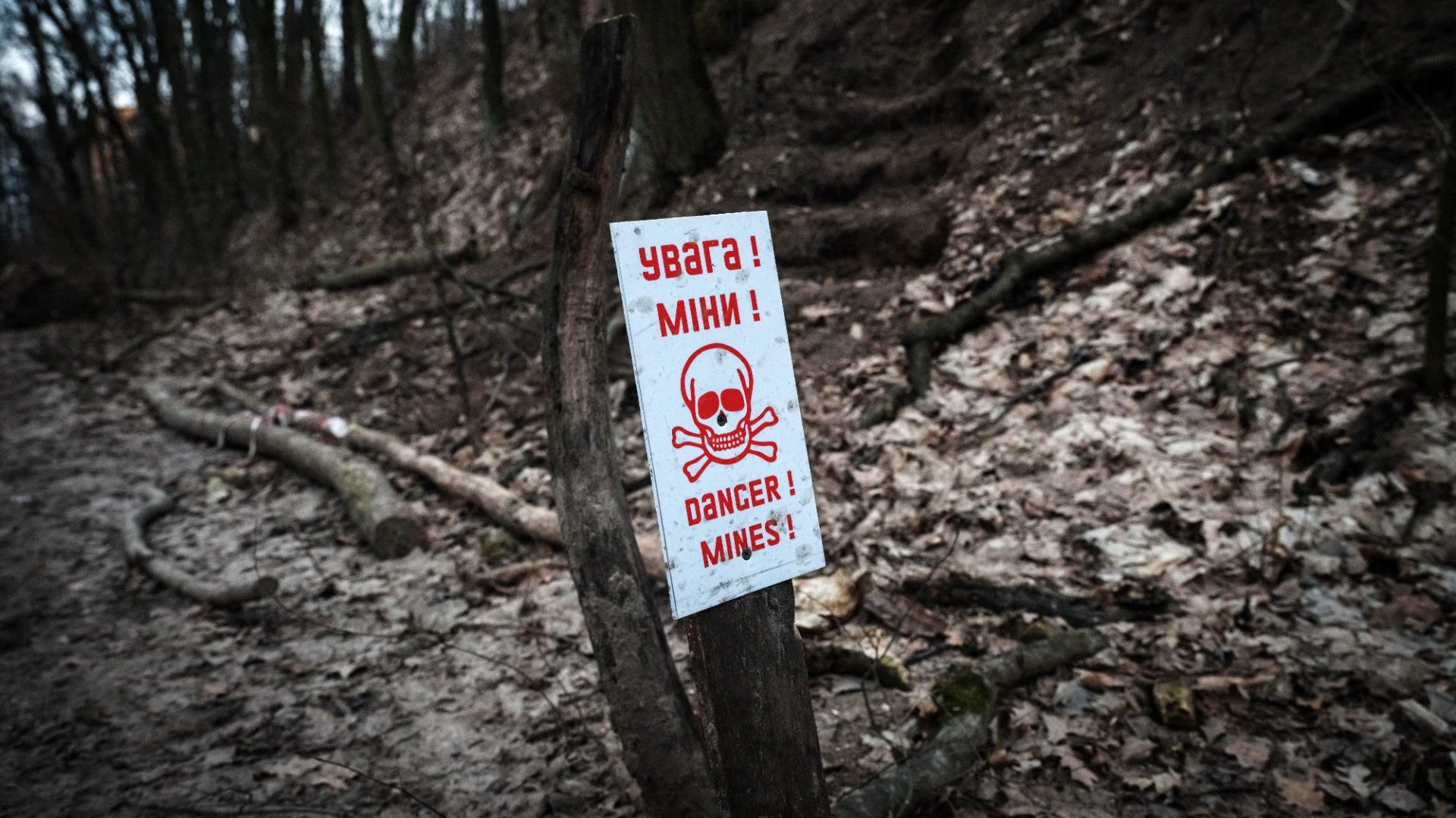
Financing this work is a full-time job in itself, and Cowan spends much of his precious time fundraising. It is essential work, because not only does Halo Trust make conflicted lands safe to live in, in Ukraine’s case it is also cleaning up the fields. The country is the fifth largest wheat producer in the world (Russia is the first), and farmers can’t plant their crops when there is so much danger lurking in the soil.
On the outskirts of Brovary, there is a new, purpose-built art gallery, dedicated to showing the horrors of the war. In the basement, I saw a gigantic exhibition of photographs of Russian atrocities, the kind of pictures that rarely appear in newspapers or on websites.
My guide could not disguise her anger, her pain and her contempt. “This was done by Russians,” she said to me, emphatically. “These were all unreasonable killings that involved an almost unbelievable amount of torture. They didn’t come to Ukraine to assassinate – they came to inflict pain.”
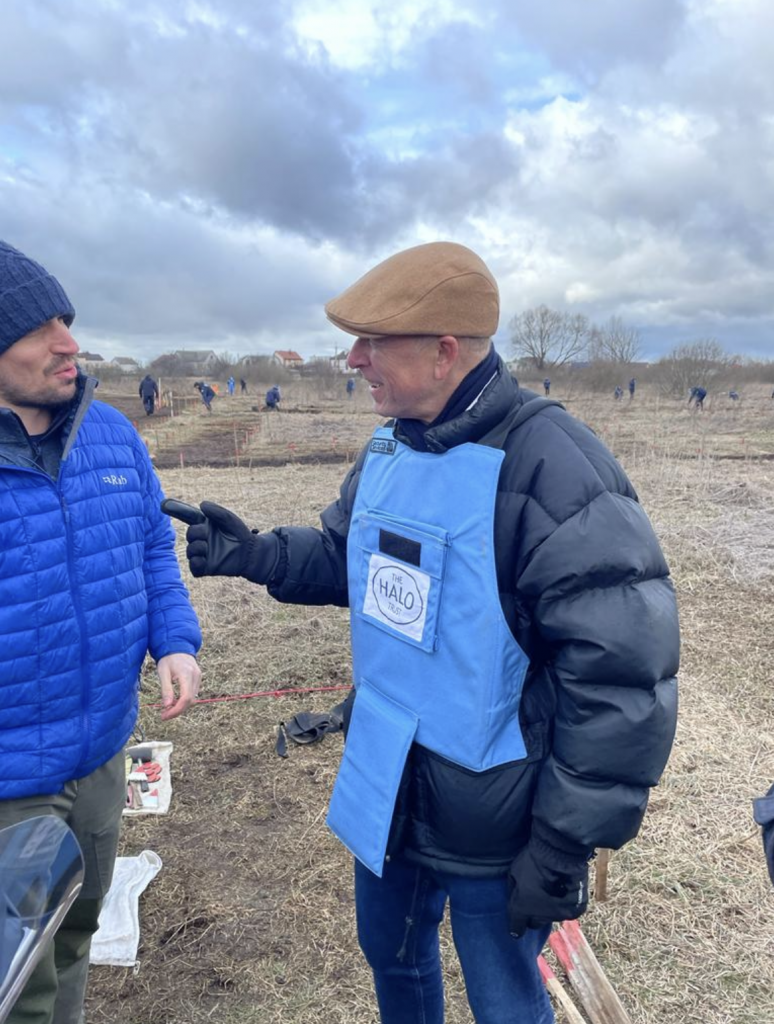
I spent the week talking to dozens of Halo Trust field workers, many of whom have family still in the Donbas, which obviously makes them nervous. Others talk openly of the family members they have already lost, their tears reluctantly appearing when they start to describe the circumstances of their death. They remain resolute, however, silently echoing the redoubtable constitution of their leader.
Back in the 1990s, Princess Diana was a Halo Trust ambassador, someone who wasn’t afraid to draw attention to what was then a below-radar issue. This changed in 1997 when she famously walked through one of the trust’s minefields in Angola. Shortly after her visit, the Ottawa Mine Ban Treaty was signed, calling for all countries to unite to rid the world of landmines.
Zelensky is someone of a different magnitude, of course, who carries a nation’s hopes on his magnificent, sweatshirted shoulders. But like Diana, he has the ability to galvanise, and to walk the streets of Kyiv is to see his image everywhere, principally in the faces of his own people.
Each and every one of them.
Dylan Jones is a journalist, author, and former UK editor of GQ magazine

